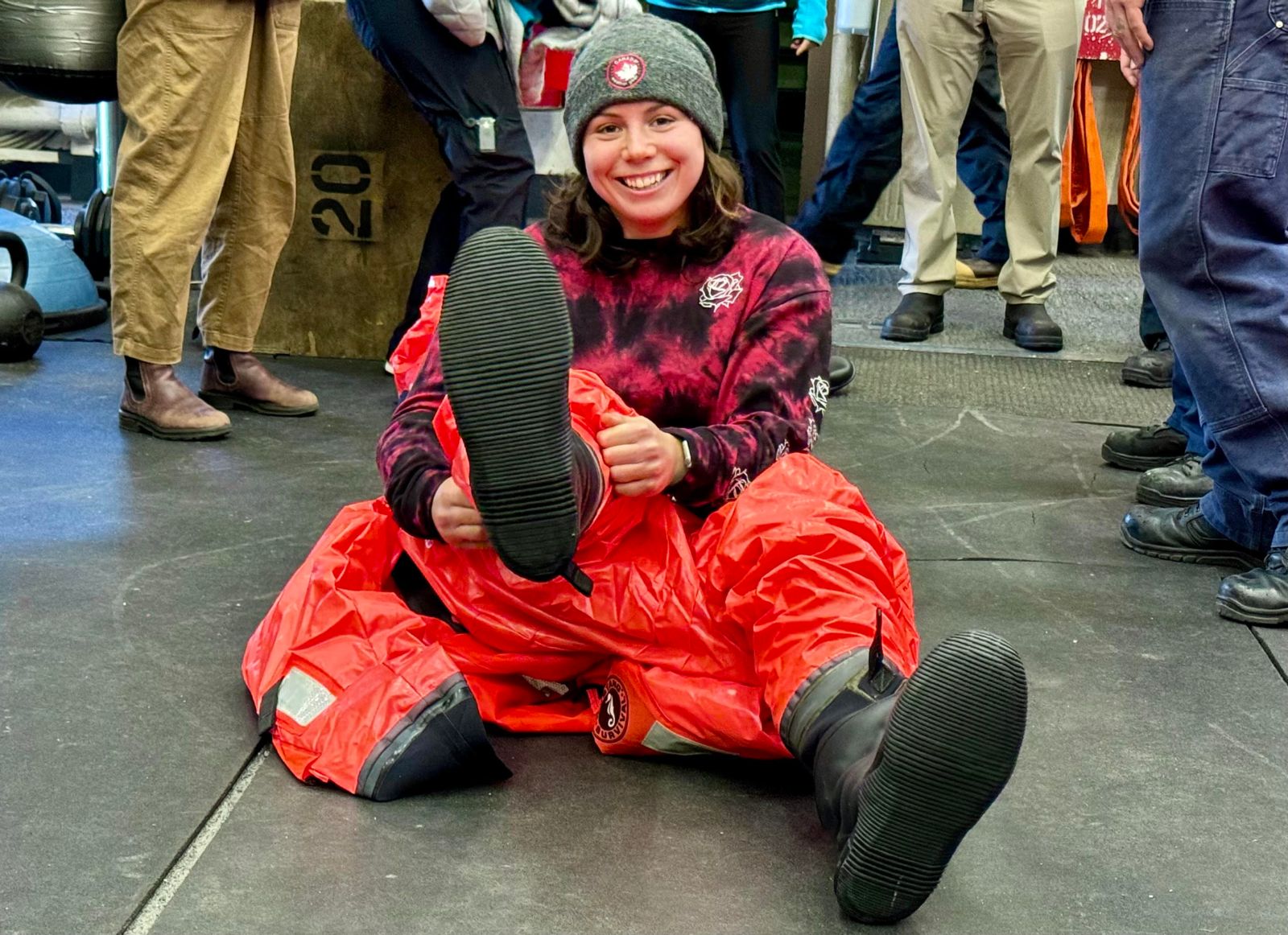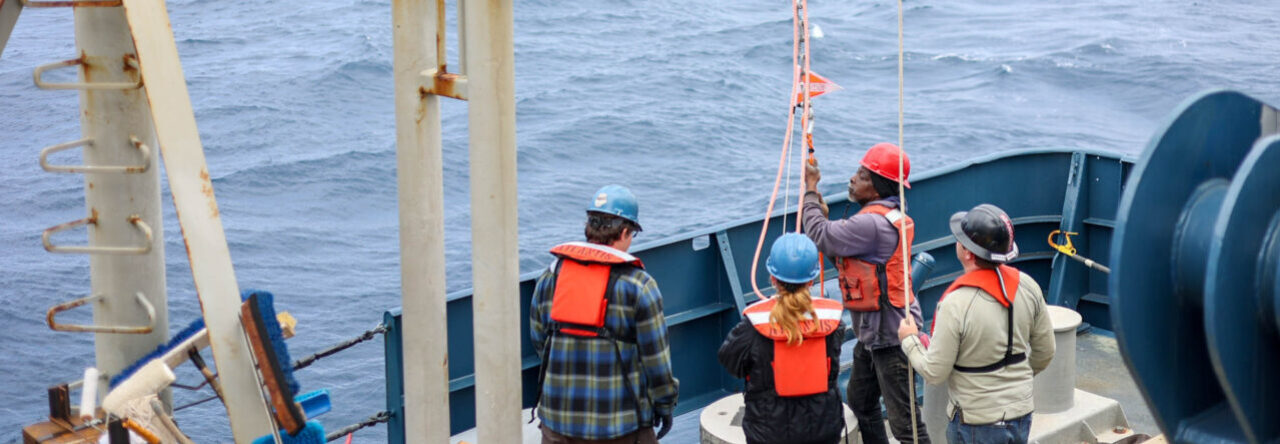Hello!
Over the past two weeks I have done a lot of traveling. My journey started on June 26 by flying to Seattle then to Anchorage. My thrid plane was much smaller, and I arrived in Dutch Harbor on June 27. I made my way to the Grand Aleutian Hotel and had a nice meal in their Margaret Bay Café. The next day, I met Kristen who had just finished her internship on the Healy. I also met a few of the other marine techs (Brandon, Bowman, and Max). During our few days in Dutch, we explored all that the small town has to offer including the famous Alaska Ship Supply, LFS, the abandoned underground hosptial, Safeway, Amelia’s, and last but not least the Norweigan Rat to play some pool. We did some hiking on Mt. Ballyhoo and enjoyed a beautiful view over the harbor; we saw about a dozen eagles. We did another hike behind the shipping supply; we had an amazing view of the coast and saw many old WWII bunkers. We also got a tour of the labs on the NOAA ship next to us in port. They are mainly studying pollock to monitor the health of fisheries in the area. After I moved onto the Healy, it remained in port for a few days while the engineers and technicians were troubleshooting some issues to ensure that we were ready for a long voyage.
Once the ship was underway, I spent a few days becoming familiar with the different routes to get where I need to go, and the equipment that we would use during the trip. This expedition is very CTD focused, so I spent a while talking with the other techs about each sensor and configuring ways to install the devices onto the rosette frame. Nick and I added a camera to the rosette; we had to find a good way to mount it without other devices blocking the view of the light and lens. The camera detects organisms underwater by interacting with their fluorescent pigments and illuinating them. One of my tasks was to create a mount for the fluorometer so that we can fasten it horizontally as opposed to vertically. This orientation would reduce interference between the multiple devices that are emitting light. I spent some time taking measurements of the rosette and fluorometer. I learned a new CAD software to design a mount that is 3D printing now, I’m excited to see how it turns out.
I was working with Maria-Christina to understand her mass spectrometry instrument that was analyzing oxygen and argon concentrations in the underway seawater. We have to make sure there are no bubbles entering the mass spec and we need to take samples of seawater every few days.
I worked with Chrisitina to disassemble, clean, and reassemble the port side and BioLab waterwalls. The waterwalls have a number of sensors including the debubbler, flow meter, fluorometer, eco-triplet, thermosalinograph, TDGP (total dissolved gas pressure), transmissometer, dissolved oxygen sensors, and the WetStar. All of these devices measure various properties of the underway seawater such as the flow rate, temperature, conductivity, concentration of matter in seawater, flourescence, and more. It is important to do regular maintenance on these systems to ensure the received data is accurate. Another one of my tasks was to use LucidChart to complete a wire diagram that shows how everything is connected on the waterwall. I traced the wires from the Adam boxes and mapped out where the devices were connected.
Brendon also taught me how to solder, that was fun I first practiced by making some wire loops and performed continuity tests. Then we tested my new skill by replacing a float switch on the waterwall. The float switch lifts up when the sink is overflowing and activates a light on the computer to let us know there is overflow.
I worked with Lorelei during the CTD casts to understand the data collection process. Communication between the deck, winch operator, and person operating the data collection computer is important to receive useful data. This communication is also important to ensure the safety of those on deck and to prevent equipment damage.
Before the cast, the rosette needs to be prepped by cocking the Niskin bottles and making sure they are fully open so they do not implode underwater due to the difference in pressure. Brandon and I replaced some of the strings on the bottles that experienced some wear and tear. The camera is also turned on a few minutes before each cast and turned off after each cast. The CTD needs to be submerged about 10-15m below the surface to acclimate the sensors to the water. Then the CTD is lowered to about 10m above the bottom, and it is slowly brought up to specified depths where the Niskin bottles are fired and samples are collected. The data is then processed and a script is run so that the hex file can be interpreted as a cnv file. The scientists then use the data to plot graphs of the pressures, density, salinity, and temperature at each station.
The scientists are also doing seafloor grabs using the Smith-Mac to collect samples from the seafloor. They are studying the samples to check for harmful algal blooms and other toxins that can be identified in invertebrates.
We did an abandon ship drill in which every member onboard meets at the bridge and gathers with their designated raft number. Each person is assigned to bring certain items such as blankets or food. When the ship’s coordinates and heading are announced, we are supposed to write on our the backs of our hands so if we were to contact help they could locate us. They showed us where the abondon ship locker was then I got to try on the cold water mustang suit.
I have really enjoyed my experience on the Healy. I have met and talked with many technicians, scientists, and members of the Coast Guard. I have learned a lot about the roles of those working on the deck and those on the bridge in charge of steering the ship. I have attended a few Coast Guard Officer trainings to learn more about the Healy’s engineering design and ice breaking capabilities. I have been lucky enough to do some whale and bird watching too. After work, I’ve enjoyed going to the gym and have invited some of my friends to learn how to erg. It has been a unique trip and I will update with another post soon!
Thanks for reading 🙂
-Gabby



